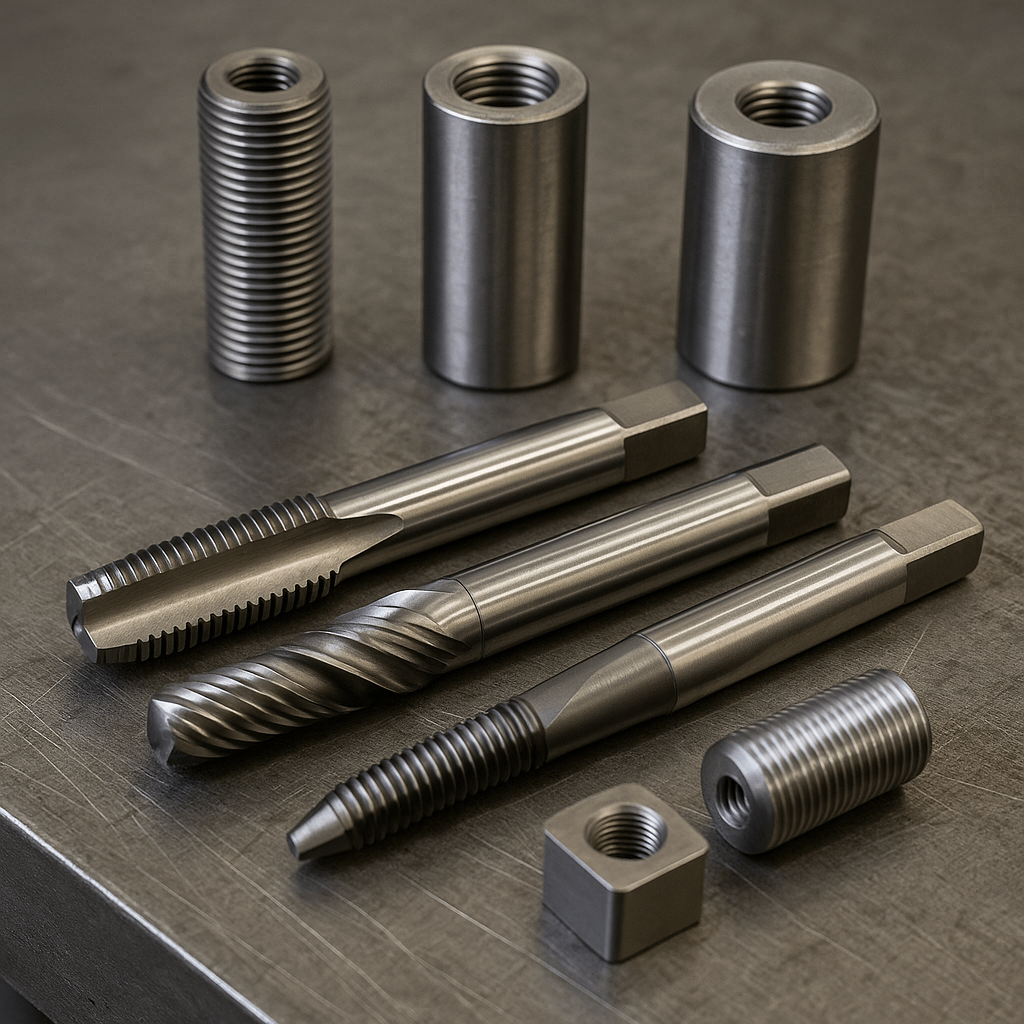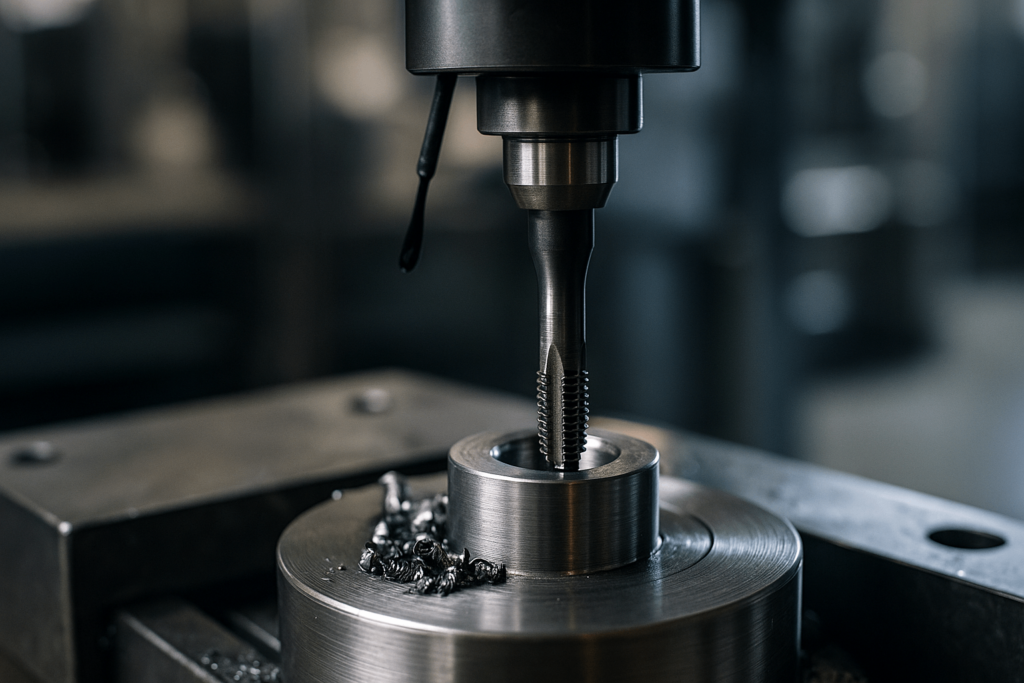Why Threading Quality Matters to International Buyers
Imagine hundreds of fasteners failing in final assembly—just because of invisible threading issues. For international buyers sourcing custom metal parts in bulk, threading inconsistencies are more than a production risk—they’re a liability. Misaligned or poorly formed threads can delay final assembly, create compatibility failures, and ultimately damage your reputation with end clients.
At YISHANG, we prioritize thread tapping from the start of fabrication. One client avoided critical assembly delays after we corrected threading specifications early in the design stage. Whether for vending frames, electrical cabinets, or display fixtures, our goal is not only to produce accurate threads but also to ensure each part integrates smoothly during your assembly. In high-mix production, thread precision directly impacts assembly success rate.
Choosing Taps in CNC Metal Fabrication: Fit, Strength, and Repeatability
Many overseas purchasers compare quotes without realizing how tap selection influences downstream outcomes. Choosing the wrong type of tap can result in:
Fasteners that loosen over time due to shallow or misaligned threads
Tap breakage in blind holes, especially in harder materials
Inconsistent threading across large production batches
Our tap selection integrates tolerance class (e.g., ISO 6H, ANSI 2B), material compatibility, and part geometry. This ensures every thread meets your assembly needs—not just drawing specs.
Instead of relying on general assumptions, we bring engineering precision to every decision.
We evaluate whether cutting taps or forming taps will provide better thread finish, cycle time, and structural hold, based on your exact application.
Top 3 Types of Taps for Threading in Metal Fabrication—and When We Use Them
Many guides list all types of taps for threading, but in production-scale metal fabrication, three types consistently meet functional and economic expectations:
| Tap Type | Structure Type | Real-World Use Case |
|---|---|---|
| Spiral Point (Gun Tap) | Through-holes in powder-coated brackets | High-speed CNC runs with forward chip removal |
| Spiral Flute Tap | Blind holes in steel enclosures | Extracts chips upward to prevent tap jamming |
| Forming Tap (Roll Tap) | Soft materials like aluminum or copper | Chipless threads ideal for electronics and finish-sensitive parts |
We also use hand taps and pipe taps where applicable, especially for threaded ports (e.g., BSP/NPT). The key is matching the tap to your part’s geometry and mechanical demands. Getting this right reduces rework, improves torque performance, and protects your per-unit value.

Tap and Material Matching: A Procurement Risk Hiding in Plain Sight
One of the most overlooked factors in sourcing is the match between tap type and material behavior. Consider:
Galvanized steel: Needs spiral flute taps to prevent chip clogging from zinc flakes
Stainless steel: Performs better with coated taps that reduce heat buildup
Aluminum: Prone to galling, which roll taps help eliminate
Buyers often send material specs but not tapping specs. That gap results in variability, especially after coating or secondary processes. At YISHANG, we integrate material data with thread requirements in early-stage DFM, minimizing surprises down the line.
For instance, if a component will be powder coated, we assess whether pre-mask or post-finish tapping ensures better functional integrity. Threads should remain functional and clean throughout production—reducing your risk of assembly delays or part rejections.
How We Prevent Threading Defects That Waste Time and Resources
Threading flaws are rarely detected in quoting—but often become a real cost during installation. We preempt these issues with:
Blind hole blockages: Solved via peck tapping and high-helix spiral flute taps
Alignment errors: Prevented through CNC-synced toolpaths and tapping heads
Surface treatment interference: Handled via thread masking or post-coat cycles
We also use statistical process control (SPC) to monitor dimensional consistency. If tool wear is detected during production, taps are replaced proactively to avoid batch-wide defects.
These steps ensure the same threading integrity in the last unit as in the first—key for buyers managing repeat orders or long-term supply contracts.
Our Quality Inspection Process for Threaded Features
| Tolerance Class | Internal Thread (Metric) | Example Use Case |
| ISO 6H | M6 x 1 | General-purpose fasteners |
| ANSI 2B | 1/4-20 UNC | Sheet metal components |
| ISO 4H/5H | Fine precision threads | Electronics, sensor housings |
This tap thread tolerance chart helps clarify the specifications we apply during inspection.
Tapping is complete only after validation. Our multi-step inspection includes:
Thread gauges (Go/No-Go) for class compliance and engagement checks
Digital depth meters for blind-hole precision
Optical inspection for lead burrs, pitch flaws, and edge clarity
Parts outside tolerance are chased or replaced—not shipped. With these controls, our clients reduce their own QA load while increasing assembly yield and client satisfaction.
Examples That Reflect What Buyers Value Most
Example 1: CNC Panels for Medical Enclosures
A European buyer in the medical device sector faced galling issues on anodized aluminum panels during final assembly. We replaced conventional cutting taps with forming taps and introduced post-anodizing threading. This eliminated frictional damage and reduced rejection rates by 22% across the production run.
Example 2: Retail Display Frame Assembly
A North American client encountered thread misalignments on powder-coated steel brackets, causing rework delays. Our team recommended pre-mask threading using spiral point taps, ensuring consistent thread alignment post-finishing. The result: 30% faster assembly time and zero post-coating corrections.
Each case shows how an informed tap strategy improves production outcomes. This minimized costly re-inspections and kept per-unit costs stable.
What Buyers Usually Ask Us About Thread Tapping
What is the best tap for blind hole applications?
We typically recommend spiral flute taps for blind holes in materials like steel or stainless steel. Their upward chip evacuation prevents jamming, especially in deep cavities.
Can you mix forming and cutting taps in one order?
Yes. Projects with different part geometries or alloys benefit from a hybrid tap strategy.
How do you manage threads after finishing processes like anodizing or coating?
We evaluate whether masking or post-tapping best preserves fit tolerance while meeting finish standards.
Can you meet global threading specs like UNC or ISO?
Absolutely. We regularly deliver threads compliant with 2B/3B, 6H, NPT, and BSP classifications.
Will you provide verification reports?
Yes—our standard delivery includes thread logs, inspection visuals, and dimensional data on request.
Final Thoughts: Precision Threads, Predictable Results
Threading may seem small, but it connects your product—and protects your bottom line.
At YISHANG, we engineer threaded components with one goal: make your supply chain more stable and scalable.
Let’s talk about your tapped parts or metal structures. You’ll hear back fast with qualified suggestions, not generic promises.



